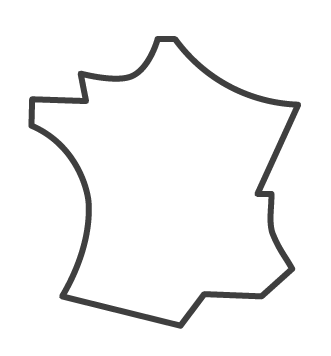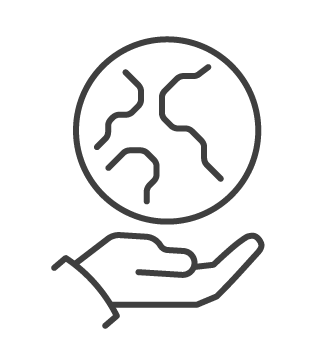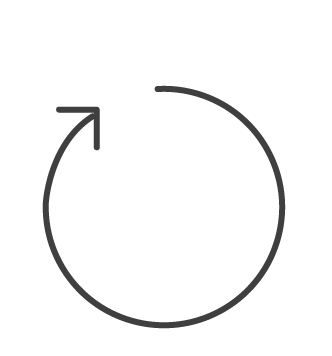Desserto, an exceptional cactus leather
The Nopal, a fascinating cactus with many riches
Cactus is a fascinating plant. By its shape in the first place, but above all by its incredible potential. Often reduced to a simple ornamental element, the cactus is a plant that knows how to adapt and grow in hostile conditions, to the point of playing a central role in the balance of biodiversity in an arid environment.
The Nopal, also called prickly pear, is a cactus native of Mexico that can measure up to 5 meters. This plant is even represented on the Mexican flag since 1821. The Nopal is a cactus with multiple properties. Nutritious first of all with its well-known fruits and its paddles which are used in Mexican cuisine. But also cosmetics with its seeds whose cold pressing gives an oil with anti-oxidant, moisturizing and protective properties.
It is from this virtuous cactus that the company Adrian di Marti decided to develop from 2017 a vegan leather, the Desserto, with the ambition to offer a truly sustainable alternative to animal leather and provide a solution to the fashion industry to reduce its environmental footprint.
Desserto, a much better alternative to animal leather to fight global warming
Desserto is a biomaterial resulting from the combination of a textile fabric, polyols extracted from vegetable oils and cactus resin. The environmental footprint of this cactus leather is simply excellent.
First of all, the life cycle analysis carried out by Adriano di Marti revealed that the manufacture of the Desserto emits 20 times less CO2 than the manufacture of its equivalent in animal leather. This is due in particular to the exceptional CO2 absorption capacity of cacti, and of Nopal in particular. The 14-acre farm on which Adriano di Marti cultivates the cacti used to make Desserto has an extraordinary carbon footprint of 15 tonnes of CO2 emitted for 8100 tonnes absorbed by Nopal per year. And beyond this excellent carbon footprint of Nopal crops, the manufacturing process of cactus leather requires 9x less energy than that of animal leather.
An alternative to animal leather beneficial for the aquatic environment
The environmental benefits of Desserto compared to animal leather do not stop at the challenge of global warming. Eutrophication is another phenomenon currently threatening biodiversity, and therefore our environment, to which animal leather is a major contributor.
Behind the rather technical term "eutrophication" hides a fatal truth for the aquatic environment: an imbalance of the ecosystem due to an excessive supply of nutrients which leads to plant proliferation and oxygen depletion. Intensive agriculture and livestock farming are major contributors to this harmful phenomenon which today affects all the seas and oceans of the world, due to their massive use of chemical fertilizers and their discharges of manure and slurry which well often end their course in rivers and streams. Animal leather, as a major outcome for the livestock industry, therefore bears a significant share of the responsibility for the eutrophication of our aquatic environment.
Desserto, made from Nopal, a plant native to Mexico and grown using organic farming methods without the use of chemical fertilizers, once again affirms its positive and virtuous difference compared to animal leather, being 5 times less contributor to the eutrophication of the aquatic environment than animal leather.
A very water-efficient manufacturing process
Another important element of the environmental footprint of materials is the consumption of water in their manufacturing cycle. Water is a rare commodity today and a source of strong inequalities in the world, to which we must be extremely careful. As soon as 2005, the UN estimated that of the 6 billion inhabitants of the world's population, approximately one fifth (1.2 billion) already lived in regions where water was physically lacking and a quarter (1.6 billion) was facing water scarcity due to lack of necessary infrastructure.
The consumption associated with animal leather is very significant. Some even claim that producing a calfskin bag requires the use of 17,000 liters of water. This is an assertion that is difficult to verify. But people agree on factual elements: the daily water consumption of a cattle is on average between 40 and 120 liters, the FAO[1] evaluates to 1.5 billion the number of cattle in breeding, 71% of arable land in Europe is used to feed cattle and 70% of fresh water withdrawn annually is used for agriculture. One understands quickly that the water consumption linked to livestock farming is very significant. It is then necessary to add the volume of water necessary for tanning the hide, estimated at around 38,000 liters per tonne of hides treated.
The comparison between animal leather and Desserto regarding water consumption quickly turns to the advantage of the latter, in gigantic proportions with a consumption nearly 170,000 times lower.
Desserto cactus leather, an aesthetic and qualitative material for exceptional leather goods
If the French leather-making tradition is recognized worldwide and sought after, it owes it to the excellence of its craftsmen. Year after year, decade after decade, these craftsmen have developed techniques and know-how to magnify the most beautiful animal leathers and turn them into objects of art and desire.
But today, faced with the urgency of protecting our planet, animal leather can no longer be the only choice. To continue to offer exceptional leather goods, brands must propose to craftsmen new materials that are just as qualitative but now ecological and responsible.
How do one ensure that the chosen material, beyond an exemplary footprint on the environment, will allow craftsmen to deploy their know-how and deliver exceptional pieces?
First of all, you have to make sure of the mechanical and physical qualities of the material. Behind this "technical" terms hides a battery of tests carried out in a laboratory to measure its qualities, such as resistance to traction, abrasion or resistance to repeated bending.
Wishing to go beyond these industry standard tests and demonstrate the quality of the Desserto, Maison Maes worked with the Centre Technique du Cuir, located in Lyon. With this laboratory, a reference for the leather industry, Maison Maes has carried out comparative tests between the Desserto reference that the Maison uses for its bags and small leather goods and a comparable sample of calfskin intended for high-end pieces of a famous French house. If the cactus leather used by Maison Maes shows a slightly higher rigidity than calfskin (which makes it a suitable material for leather goods but not the ideal material for shoes), it has equal strength and durability qualities, and is even superior on certain criteria such as friction resistance.
Thus, placed in the hands of Maison Maes' partner craftsmen, Desserto cactus leather can be worked according to exceptional French know-how to be transformed into high-quality bags and small leather goods with a much better environmental footprint than the animal leather equivalent.
[1] Food and Agriculture Organisation – Nations Unies

![Sac à main M1_06 noir vu de profil - MAES Paris, Haute Maroquinerie innovante & responsable [color:kaki,khaki]](http://www.maesparis.com/cdn/shop/files/maison-maes-m1_06-kaki-sac-a-main-cuir-vegetal--2-profil_29cff34d-01ae-4a19-b6d3-04c6c95c20d2_{width}x.jpg?v=1709313336)
![Sac à main M1_06 kaki vu de face - MAES Paris, Haute Maroquinerie innovante & responsable [color:kaki,khaki]](http://www.maesparis.com/cdn/shop/files/maison-maes-m1_06-kaki-sac-a-main-cuir-vegetal--1-face_2f940fd1-72c4-4f83-a2d7-b1aaffec94ef_{width}x.jpg?v=1709313336)
![Pochette avec chaine M1_02 en M_MAT_cactus noir vue de profil - MAES Paris, Haute Maroquinerie innovante & responsable [color:noir,black]](http://www.maesparis.com/cdn/shop/files/maison-maes-m1_02-noir-sac-a-main-cuir-vegetal--2-profil_{width}x.jpg?v=1709650772)
![Pochette avec chaine M1_02 en M_MAT_cactus noir vue de face - MAES Paris, Haute Maroquinerie innovante & responsable [color:noir,black]](http://www.maesparis.com/cdn/shop/files/maison-maes-m1_02-noir-sac-a-main-cuir-vegetal--1-face_{width}x.jpg?v=1709650772)
![Sac à main M1_01 carmin vu de profil - MAES Paris, Haute Maroquinerie innovante & responsable [color:carmin,carmine]](http://www.maesparis.com/cdn/shop/files/maison-maes-m1_01-carmin-sac-a-main-cuir-vegetal--2-profil_{width}x.jpg?v=1709313189)
![Sac à main M1_01 carmin vu de face - MAES Paris, Haute Maroquinerie innovante & responsable [color:carmin,carmine]](http://www.maesparis.com/cdn/shop/files/maison-maes-m1_01-carmin-sac-a-main-cuir-vegetal--1-face_{width}x.jpg?v=1709313189)
![Sac à main M1_03 camel vu de profil - MAES Paris, Haute Maroquinerie innovante & responsable [color:camel]](http://www.maesparis.com/cdn/shop/files/maison-maes-m1_03-camel-sac-a-main-cuir-vegetal--1-profil_{width}x.jpg?v=1684251847)
![Sac à main M1_03 camel vu de face - MAES Paris, Haute Maroquinerie innovante & responsable [color:camel]](http://www.maesparis.com/cdn/shop/files/maison-maes-m1_03-camel-sac-a-main-cuir-vegetal--1-face_{width}x.jpg?v=1684251847)
![Pochette M1_04 bleu nuit vue de profil - MAES Paris, Haute Maroquinerie innovante & responsable [color:bleu nuit,night blue]](http://www.maesparis.com/cdn/shop/files/maison-maes-m1_04-bleu-nuit-pochette-cuir-vegetal--2-profil_{width}x.jpg?v=1684252706)
![Pochette M1_04 bleu nuit vue de face - MAES Paris, Haute Maroquinerie innovante & responsable [color:bleu nuit,night blue]](http://www.maesparis.com/cdn/shop/files/maison-maes-m1_04-bleu-nuit-pochette-cuir-vegetal--1-face_{width}x.jpg?v=1684252706)
![Porte-cartes M1_05 camel vu de profil - MAES Paris, Haute Maroquinerie innovante & responsable [color:camel]](http://www.maesparis.com/cdn/shop/files/maison-maes-m1_05-camel-porte-cartes-cuir-vegetal--2-profil_{width}x.jpg?v=1684253446)
![Porte-cartes M1_05 camel vu de face - MAES Paris, Haute Maroquinerie innovante & responsable [color:camel]](http://www.maesparis.com/cdn/shop/files/maison-maes-m1_05-camel-porte-cartes-cuir-vegetal--1-face_{width}x.jpg?v=1684253446)


